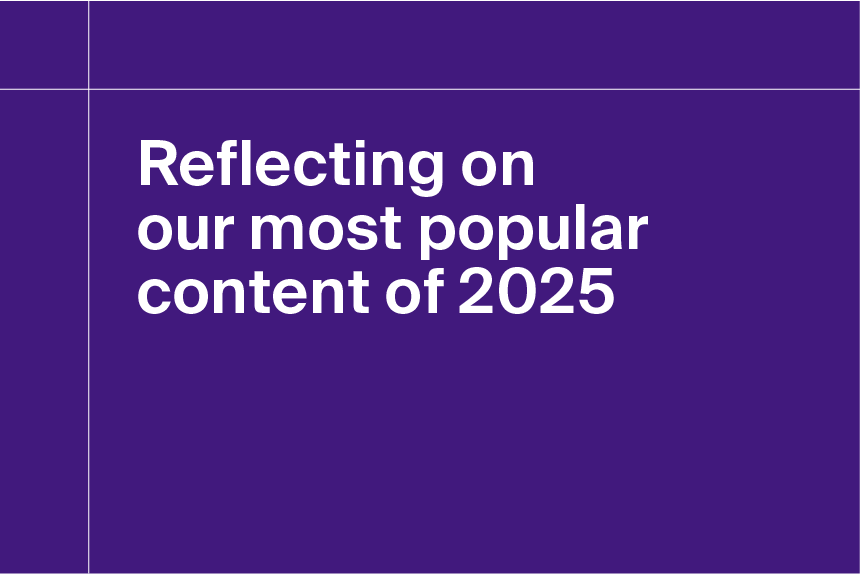3 takeaways from the Healthcare Marketing & Physician Strategies (HMPS) Summit
May 17th, 2023

Were you at the Healthcare Marketing & Physician Strategies (HMPS) Summit held in Austin, Texas April 17-19? No worries if not: You missed out on some great conversations and illuminating sessions, but I’ve got you covered with the overview.
The Summit was a packed couple of days full of opportunities to network with healthcare leaders in strategy, business development, physician relations, and marketing from all over the country. Hosted by the Forum for Healthcare Strategists, the conference featured several content tracks, including data strategies, engagement strategies, physician relations and sales, and strategic marketing.
We heard from speakers representing organizations that varied considerably in size, geography, and market dynamics. Some organizations were situated in highly competitive geographies and were focused on local growth, some were expanding services across state lines, and others were experiencing capacity issues due to high population growth. Despite these differences, there were common themes throughout, and just about everyone in the audience could take some new knowledge back home and apply it to their specific markets and situations.
Here are some key takeaways from the sessions I attended and my conversations with other conference-goers.
Grounding strategies in data to stay ahead of the changing healthcare landscape
If you’ve had an ear to the ground anytime in the last decade, you know the healthcare industry is experiencing significant changes, which are having a profound impact on traditional care models. Many sessions discussed the shift to value-based care market restructuring, rising consumerism, the ongoing digital revolution, a shrinking independent primary care market, regulatory reform, the rise of retail care, and alternative access points.
These industry changes are shaking up traditional referral patterns and are requiring organizations to have much tighter targeting. As one speaker said, “We can’t live without the data anymore.”
Several speakers shared their favorite tips and tricks for using data and analytics to prioritize and focus their efforts. For example, organizations are using market intelligence to:
- Understand patient in- and out-migration
- Assess service line offerings
- Determine the right network of healthcare professionals (e.g. employed, aligned, independent, etc.)
- Map the patient journey
Some organizations are using a combination of field intelligence, internal data (e.g., EMRs), and third-party data (e.g., all-payor claims) to get an expanded view of patient care patterns in their market. This data, for example, may be used to uncover new providers or refine specialists and primary care providers into highly targeted lists. One organization also shared how data helped them to look beyond primary referrers and uncover leakage from secondary referral sources such as neurologists or other specialists.
Improving physician relations and partnerships
Many of the sessions that I attended focused on building and strengthening physician partnerships with teams of physician relations managers and physician liaisons. Not only do these roles serve as key links between physicians and regional leadership, but they also drive strategic initiatives and referral growth.
Physician relations teams are using data and analytics to identify opportunities for physician partnerships. Once these physicians are identified, the teams develop messaging to convey how partnering with their organization can bring value and complement their practice. For example, inpatient services may provide greater care coordination, access to more resources, and improved quality and cost metrics through bundled payment programs.
These teams are also using a variety of engagement tools, such as CMEs, grand rounds, roundtable discussions, community events, marketing, and social media opportunities, to connect with potential partners.
Scaling engagement through physician marketing
Two important aspects of any physician relations program are physician outreach and operations, such as referral intake and care coordination. Because these two processes focus on one-to-one interactions, physician and referral marketing are crucial in helping organizations achieve one-to-many reach.
Several speakers discussed how they’ve built successful physician marketing programs. One organization shared that the foundation of their successful strategy was two-fold:
- Partnering with physician relations teams: This enables them to gain voice of customer, create messaging that resonates, and develop content that conveys value.
- Using data and analytics: Using intelligence such as claims data helps marketers to understand service lines, referral patterns, and market dynamics. Marketers use this data to create tailored content on service lines, new programs, and referrals.
I heard a lot about how a strong physician content strategy goes beyond just brochures and collateral. Developing thought leadership content helps physician audiences to see an organization as a valuable resource rather than simply a business partner. Content must also complement the messaging physician relation teams are conveying about how the organization supports and partners with physicians, seamlessly integrating into the work they’re already doing.
Other sessions covered how to build a multi-channel marketing strategy, which included print, website, email, social media, podcasts, conferences, content hubs, and CMEs. Interestingly, several speakers debunked the myth that physicians don’t check emails—apparently they’ve found high success rates through this channel. In fact, one organization reported a 70% engagement rate with their emails! Additionally, multiple speakers shared the power of video for driving high engagement rates.
Learn more
It was incredibly eye-opening to mingle with healthcare leaders and hear their perspectives while also capturing some valuable tips and tricks to take home. Amid so many diverse ideas and strategies, there was one common refrain: market intelligence should be an important priority for healthcare providers nationwide, regardless of market or specialty.
If you missed us at HMPS or want to learn more about how you can use our data and analytics at your organization, sign up for a free trial today.



